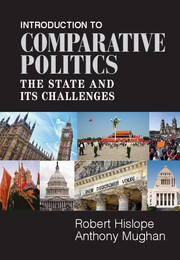4 - Frameworks of Governance
Published online by Cambridge University Press: 05 June 2012
Summary
The previous chapter focused on how executives, legislatures, and courts interact in the making of public policy in both democratic and authoritarian regimes. In this chapter, we continue the theme of describing how governments work by expanding our investigation to cover the broader institutional framework within which governance takes place. Governance frameworks comprise the institutional landscape that surrounds and conditions the routine behaviors and interactions of political executives, legislatures, and courts. This framework is made up of the basic structures that all states must choose for themselves. Their first choice is whether these structures will be designed and coordinated to promote authoritarian or democratic governance. This decision made, more particularistic ones follow. Will there be a legislature, and, if yes, will it have two chambers (bicameralism) or just one (unicameralism)? Will the law making power be concentrated at the center (unitarism) or will it be shared with constituent territorial units (federalism)? How will governments be chosen, and, if by direct election, will plurality, proportional, or mixed electoral systems be used to elect candidates and parties to office?
These are some examples of the choices states have to make in establishing the institutional framework within which day-to-day governance takes place. In the pages that follow, these issues are addressed sequentially. The political costs and benefits associated with these choices will be discussed, first for authoritarian regimes and then for democratic ones. This discussion of governance framework begins, however, with an explication of an important foundational term of discourse: political institution.
- Type
- Chapter
- Information
- Introduction to Comparative PoliticsThe State and its Challenges, pp. 94 - 133Publisher: Cambridge University PressPrint publication year: 2012



